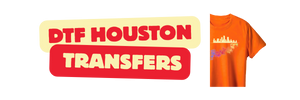California DTF trends are reshaping how brands, designers, and studios approach custom apparel. As Direct-to-Film transfers gain momentum, DTF printing on apparel delivers vibrant color and a soft hand feel for California studios. In California, conversations about Direct-to-Film vs DTG guide brand decisions, balancing color range with fabric versatility. This overview also covers DTF heat press techniques and how film quality affects durability and washability. By aligning with California DTF trends, shops can leverage on-demand capabilities to test concepts quickly.
From a broader perspective, the topic can be framed as film-based garment transfers and digital-to-fabric decoration that power on-demand apparel in California’s fast-paced market. LSI-friendly terms such as film-printed transfers, pigment-based imagery, and color-management workflows help readers connect with the technology without heavy jargon. Exploring these alternatives aligns with how search engines associate related concepts with Direct-to-Film printing, improving accessibility for readers and customers. This framing highlights California’s demand for quick-turn, customized fashion while acknowledging how these methods compare to traditional decoration techniques.
California DTF trends: Navigating 2025 innovations in Direct-to-Film transfers
In California, California DTF trends are reshaping how brands and studios approach custom apparel. Direct-to-Film transfers offer vibrant color, durable prints, and scalable production—from one-off drops to small runs—making DTF printing on apparel a practical option for many California businesses.
Key drivers include advancements in equipment and inks that deliver more consistent white ink, stronger color fidelity, and longer print life across cottons, blends, and performance fabrics. Standardized DTF film, improved adhesion, and smarter color management reduce misprints and back-migration, strengthening the appeal of Direct-to-Film transfers in the California market.
DTF printing on apparel: Color management, fabrics, and workflows for California brands
DTF printing on apparel relies on tight color workflows and RIP-based color management to reproduce Pantone-like hues on screen and fabric. This capability is especially valuable in California, where vibrant graphics and detailed imagery are common across fashion, streetwear, and event merchandise.
From prepress to post-press, scalable workflows help California shops shorten lead times. Testing on cottons, blends, and performance fabrics common in the region ensures consistent results, while calibrated color profiles and standardized heat settings support reliable Direct-to-Film transfers across batches.
Direct-to-Film transfers vs DTG: Choosing the best method for California apparel lines
Direct-to-Film transfers offer strong color range, fabric versatility, and lower unit costs for small to mid-sized runs, making them a natural fit for California brands seeking speed and flexibility.
DTG excels on cotton-heavy apparel with a soft hand feel but can incur higher per-unit costs and slower turnaround for larger jobs. For California product lines, the choice between Direct-to-Film vs DTG—or even traditional screen printing—depends on fabric, artwork complexity, volume, and margin goals.
DTF heat press techniques: Achieving durable, vibrant finishes across California fabrics
DTF transfers rely on precise heat and pressure. California shops optimize platen size, dwell time, and temperature to accommodate different garment thicknesses and fabrics, documenting standard press parameters for lights, mediums, and heavies to reduce rework.
Effective DTF heat press techniques also hinge on film selection, adhesive compatibility, and post-press curing. With careful QA—wash and abrasion tests on representative swatches—brands achieve durable finishes that withstand California’s climate and consumer care expectations.
California custom apparel trends: How DTF is shaping fashion, sports, and pop-up culture
Across fashion and streetwear, sports teams, schools, and event merchandise, California custom apparel trends are increasingly powered by Direct-to-Film transfers. The ability to customize names, numbers, and limited-run graphics supports rapid experimentation and on-demand drops.
As brands embrace on-demand production and minimize waste, DTF printing on apparel becomes a core capability for California studios and retailers. This trend aligns with sustainability narratives, local supply resilience, and the opportunistic spirit of California’s pop-up culture, making DTF a strategic priority for 2025 and beyond.
Frequently Asked Questions
What are the latest California DTF trends in Direct-to-Film transfers for apparel?
California DTF trends show Direct-to-Film transfers expanding across fashion brands, sports teams, and events, delivering vibrant color and on-demand production across fabrics. For success, invest in reliable DTF printing on apparel workflows, high-quality films, and robust heat press protocols used by California shops.
How does DTF printing on apparel fit within California custom apparel trends, especially when comparing Direct-to-Film vs DTG?
DTF printing on apparel aligns with California custom apparel trends by enabling fast turnarounds, customization, and vibrant graphics on a wide range of fabrics, often with lower setup costs for small runs. When weighing Direct-to-Film vs DTG, consider design detail, fabric, order size, and cost per unit.
What are the most effective DTF heat press techniques for maintaining consistent results in California shops?
Effective DTF heat press techniques include optimizing platen size, precise temperature and dwell time, even pressure, and proper post-press curing to ensure durable transfers on cottons, blends, and performance fabrics common in California.
In the California market, how should brands compare Direct-to-Film transfers with DTG to stay aligned with California DTF trends?
Compare color fidelity, hand feel, wash durability, and production costs; Direct-to-Film transfers offer vivid color on diverse fabrics and faster turnarounds that fit California DTF trends, while DTG excels on cotton-heavy items with soft hand; use this to tailor product mix.
What practical steps should California brands take to implement California DTF trends in their operations and stay ahead?
Steps include selecting scalable equipment and film ink options, building a color-managed prepress workflow, standardizing heat press settings by fabric type, conducting wash and abrasion tests, and communicating a sustainability-forward narrative aligned with California DTF trends.
| Topic |
|---|
